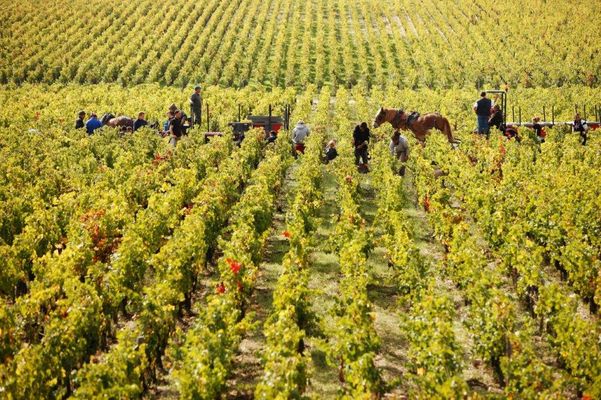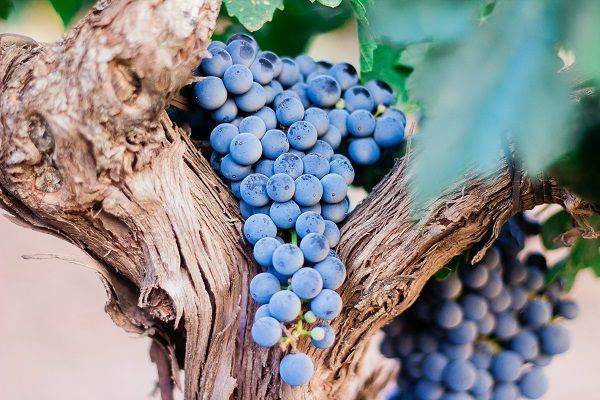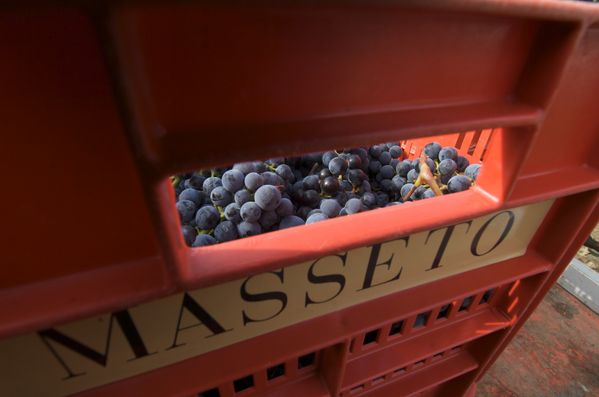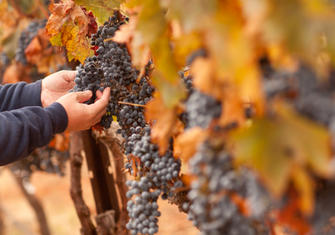In a year of shocking climate events, the investment wine growers have faced significant challenges. What are the early indicators for the 2023 vintage?
How is the 2023 harvest shaping up?
Drought, wildfires, intense storms and downy mildew have been the big challenges for wine growers internationally this year. The results of an extremely challenging growing season are now becoming apparent.
The French Agricultural Ministry reported on the 8th September that overall wine production will fall just 2% below the 5-year average in 2023, but regional disparities will see some areas suffer a significant cut in yield.
Bordeaux 2023 harvest – 10% loss in average yield
The most prolific fine wine producing region in the world has been hard hit by climate conditions that created the perfect environment for downy mildew in June, July and August. The Agricultural Chamber of the Gironde describes a ‘brutal attack’ on the region’s vines with 90% affected. Well-resourced vineyards were better equipped to deal with the intensive management required to minimise spread and Chateaux are refering to varying levels of impact.

Merlot is particularly susceptible to mildew, and most Bordeaux vineyards will start their Merlot harvest week commencing 18th September. Younger Merlots are being harvested now but significant losses could mean a more Cabernet-evident year for the 2023 wines.
This harvest is closer to the 10-year average dates and around one to two weeks later than in 2022, which was an extraordinarily early harvest. Cheval Blanc's Pierre-Olivier Clouet comments that "This is another early harvest, but it is not at all the same style of vintage as last year."
Champagne 2023 harvest – plump-berried and bountiful
The home of the world’s most revered sparkling wines looks set for a bumper harvest. The region was fortunate not to have been afflicted to the same extent by mildew. As the picking commenced the vineyards were full of record-breaking bunches of large grapes weighing in at an all time average high of 200 grammes.
Authorised harvest dates are set for each commune and grape type with Chardonnay, Pinot Noir and Meunier set to run until the 16th September. The Comite also set the allowable yield at 11,400 kilos per hectare, and all growers are expecting to achieve this. Champagne is reportedly expecting 2023 to deliver the second highest yield in the last decade and the quality is looking good too.
Burgundy 2023 harvest – plentiful!
Home to some of the most expensive wines in the world, Burgundy managed to escape the extreme and devastating frosts suffered in 2022 and, despite some localised hail, had a kinder treatment from Mother Nature this year.
Mildew, whilst still a challenge, has not been the significant factor it has in Bordeaux with the 2023 vintage. There is some late season, localised Botrytis being managed by the vineyards as harvest commences.

Growers report a high number of grape bunches on Burgundy vines. Maximum yield is defined legally for each of the region’s appellation and there is confidence those levels will be achieved in a bountiful vintage. The key challenge, as always with Burgundy, is harvesting all the plots at the same level of ripeness. Picking is underway and we look forward to further detail on quality as harvest progresses.
Rhone 2023 harvest – going to plan
The region didn’t escape the weather conditions suffered elsewhere, but it does seem to have come off lighter in the Rhone vineyards producing those key wines for investors. Cote Rotie looks to be embarking on a relatively straightforward harvest with fairly routine dates. Picking commenced about 8th September.
August heatwaves brought forward harvest in Chateauneuf-du-Pape vineyards and Cote de Rhone to the 23rd August. We will comment more on yield and quality in due course.
Italy 2023 harvest – dramatic drop in yield
Italy is suffering significantly with climate change driven events and questions are being asked about the long-term viability of grape growing in some areas of the country. Italy’s farming union, Coldiretti predicts the 2023 harvest could be reduced by 14% on 2022.

Devastating floods, drought, wildfires and mildew wreaked havoc over the 2023 vintage. These once rare events are now becoming routine challenges to Italian wine producers.
In Tuscany, Peronospora mildew demanded significant vineyard management to prevent spread, but it looks like those affected may have a resultant drop in productivity of 20 to 40%. Despite this 2023 quality is still expected to be very good / great.
Piedmont suffered fierce hailstorms in July, but Coldiretti states yields appeared normal in early August. Harvest is now underway and we wait to hear more.
Napa 2023 harvest: 'like the good old days’
California is renowned for its wildfire seasons, although those north of the border in Canada have been the headline grabbers in 2023. But weather conditions have been slightly different this year and a few growers have even commented on this year feeling more like one typical of a decade ago.
The Napa harvest started two to three weeks later than average for most, due to a cooler growing season, following a considerably wetter winter and early spring. Significant rainfall this year has provided relief to vines that have suffered years of back-to-back drought. The region’s winemakers have referred to 70 inches of rain replenishing ground water levels, refilling lakes and resevoirs to full capacity.
In response, Napa’s vines have had slower growth this year and have plentiful canopies. Harvest is underway and expected to finish in early to mid - October with Napa growers up-beat about 2023 quality.
Our view on the 2023 harvest to date
The 2023 harvest is underway with more key detail to be revealed. Supply is evidently an issue with Bordeaux and Italian wines, but we are yet to know which vineyards will be affected and to what extent. With a plentiful vintage, Burgundy buyers may have more access with the 2023 wines, if pricing allows. Champagne is seeing the most active trading in the secondary market this year and a plentiful vintage will support additional growth in global demand.
Vintage quality across all regions will not be revealed fully until the critics appraise the wines and publish their scores in Spring next year.
What is apparent is the real effect the changing climate is having on the wine growing regions of the world. The next decade may be the last in our lifetime of wines as we know them. More robust grape varietals may need to be introduced to deal with rising summer temperatures, drought and mildew. Blends may change, vineyards may move north bringing new characteristics. Investors in wine should be looking at the best wines in current new vintages as important assets for the future.
See more information on the benefits of investing in fine wine and speak to a member of our expert team on 0203 384 2262.

